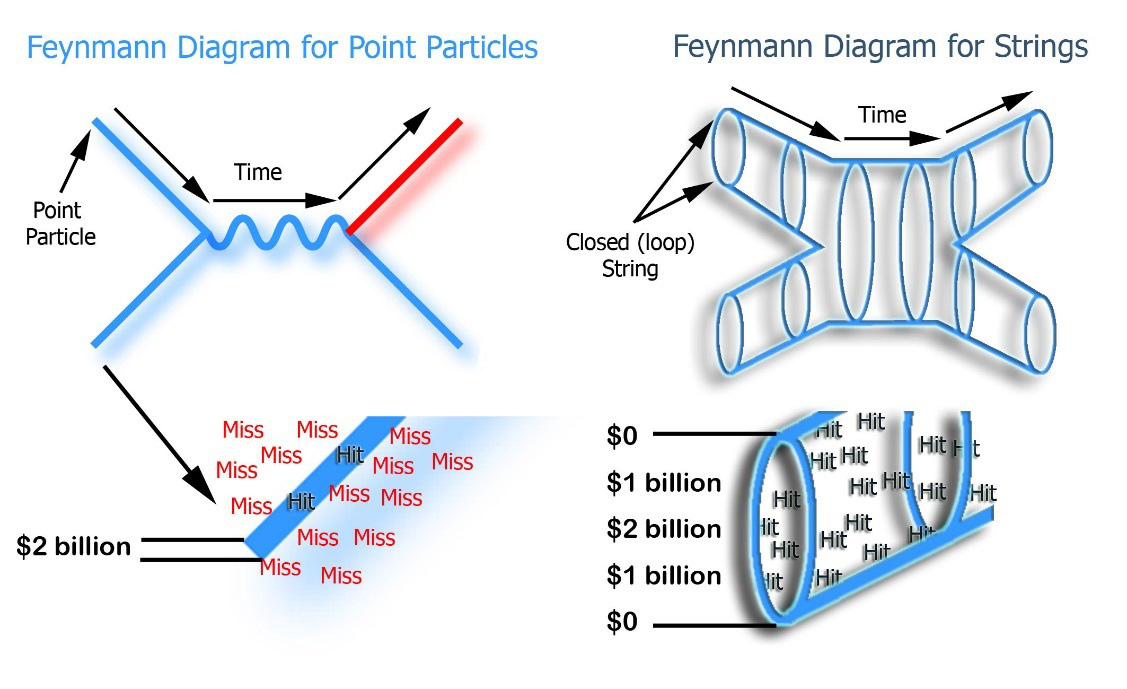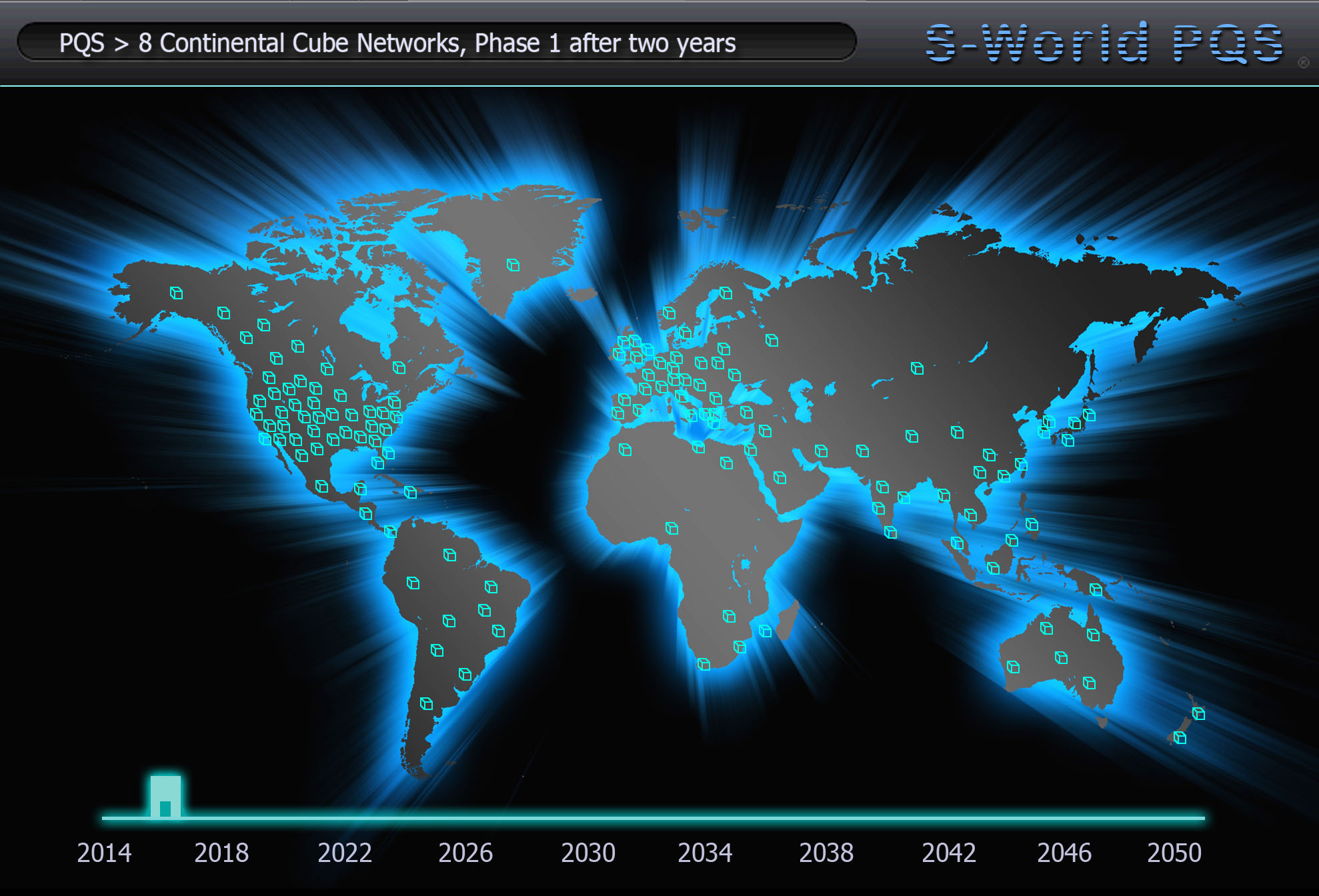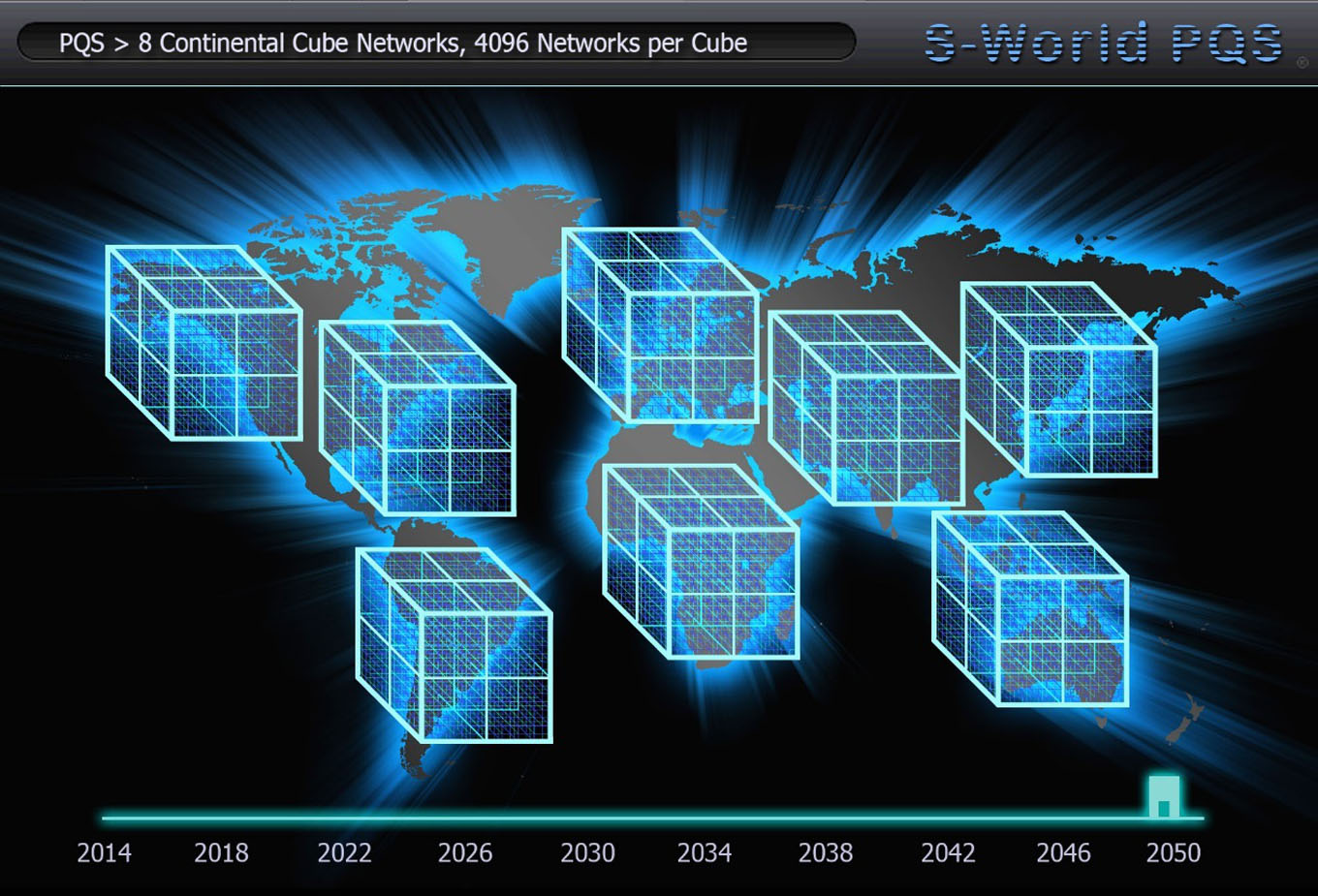CFM & POP Analogies
CFM & POP Analogies
There are a number of analogies that have been created to describe CFM and POP, some relevant to physics and some simply business examples.
1a. General Relativity
Before creating CFM and POP deep consideration was placed into the Butterfly Effect mantra: “Can the flap of a butterfly’s wings in Brazil, cause a tornado in Texas?” To summarise, I imagined a cubed grid across the world. Within one cube sat our butterfly, and on the outside of the cube the energy fluctuations were recorded. It was considered that if the cubed grid extended in all possible directions including Texas, then one could measure the energy transference of the wind from the butterfly’s flap, and see if it caused, or contributed to the tornado. This consideration assisted by the mathematics of the Mandelbrot set fractal became the father of CFM and POP and inadvertently introduced quantum mechanics.
![]()
About eight months later, following my return to England I started to see various documentaries attempting to describe General Relativity, Einstein’s Theory of Gravity, which is now generally considered as “The Fabric of Space and Time.” Often when visualised within documentaries, General Relativity is done within a series of cubes, similar in many ways to the “butterfly grid,” but extending in all directions.
When we consider the cubed nature of CFM, each cube desired to indicate a fixed amount of profit, combined with the enabling nature of “POP” first filling the cubes. Then at the fixed point diverting profit and in so doing creating more on more cubes, this is in many ways creating our own private piece of General Relativity; as we create the fabric of the network out of CFM and see POP grow more and more cubes over time. The similarity to general relativity is not just within the creation of the cubed grid, it is also within the stretchiness and elasticity within each cube. Points 1 to 8 of SUSY similarity, all in one way or another describe the flexibility of the network cubes.
Since the year 2000 the S-World network design has been virtual. Where persons and businesses can interact and see each other’s surroundings within cyberspace. Visually we can do this, and quickly: some satellite time from NASA and the NSA, rendering graphics from The SIMS/SIM City and network connectivity from facebook, all linked by the GPS’s in people’s phones. Visually and positionally a pretty accurate virtual simulation of earth can be created with the technology we have already created.
However, where is the physics? If one is to create a simulation of our earth, to assist us in many ways. To build it correctly, it needs to include the universe where our world resides in or at least a blank universe. This is where CFM and POP come in as CFM becomes a blank canvas to be viewed/discovered/created/measured as soon as the energy of POP interacts with it.
1b. String Theory
Dr Amanda Peet describes String Theory as an “extremely economical theory,” which is testament to consideration that if adapted to our economics, it would add great value. (Note: To see the original inspiration: U Tube – Dr Amanda Peet: String Theory for the Scientifically Curious, assisted by U Tube – Leonard Susskind: Lecture 1, String Theory and M Theory)
First we consider all the businesses within an individual network as havening quantum mechanical properties, specifically their uncertainty. With over 2000 businesses we cannot be certain how much profit they will collectively make.
Next we consider the network itself as General Relativity, the fabric of space and time. Which when visualised by physicists, is more often than not, done so within a matrix of cubes. Each individual network represents an individual cube, which is desired to be filled with $2 billion in profit each year.
Lastly we consider String Theory as the elasticity in the framework of the cube. Allowing it to gather all the eventual profits of the 2000 odd businesses, smoothing and calming them, applying elasticity, entangling them doing whatever it takes to make sure the final result is within range of the cube. When this is amplified by SUSY Similarity point 4: SUSY Hierarchal Spin Equalizer, which looks at the Mother Network and its eventual 15 subsidiaries and combines the profit figures from the strongest and weakest networks, the result dictates that even if an individual subsidiary network is performing way under its target, as it will partner with the strongest of the other 15 networks, the combined financial result will fall within an acceptable range.
By following POP and adapting it into Baby POP, the by-product changes the individual networks into sets. It is where one can apply certain behavioural patterns that apply to String Theory as opposed to point particles. In essence the POP growth pattern creates, not a set of individual networks, rather strings of networks.
If we look at the Feynmann Diagram on the right, we see how this works within physics. On the top left is a standard Feynmann Diagram, where only a few probabilities are effective in creating a reaction. But on the right we see the SUSY version, where as all probabilities fall within the loop of a string, and all can be accounted for.
If we look at the bottom two sections of the diagram, on the left we see a point particle or individual network, which needs to generate a fixed figure. However on the right, due to the SUSY Hierarchal Spin Equalizer, alongside other techniques, the range for success is far more flexible. As the network is now effectively built out of strings. The strings of networks work as one. Looking always to balance and protect the weakest individual parts of the network.

Note: As soon as a network is receiving over $2 billion, additional profit (the overflow) is automatically diverted (invested) into other networks. The effect of this is to spread the development of the network across the globe, as opposed to creating giant profit centres here and there. The spread across the globe is essential as each network is designed to house an operation centre, education facility, alternate power source and hospital. Alongside which, new retail catchment areas and sets of employees are found.
When it comes to the financial implications for investors and those near new networks, both win. The new networks are half owned by the parent networks, so the rich keep getting richer, however the very nature of a network including jobs, education and medical benefits improves the prospects of those living near it.
We sum up this fiscal scenario with a simple catch phrase, “the rich get richer, the poor get richer.”
1c. Thermodynamics
In its classic form “POP” is designed to create an absolute picture of the Global or Universal economy based on certainty, whereby unless a network is performing above its $2 billion profit target, it will not be displayed. This being so, if we were to present future simulations based on the expectancy of networks becoming stable, as currently presented in American Butterfly via Baby and Angel POP. Presuming a 2014 start. In 2016 across the globe 1,024 continental networks would have been founded or designated, of which between 10% and 20% would be expected to perform above their $2 billion profit targets.
The graphic below illustrates how we might view these stable networks. All would be individual, seen scattered here and there, the majority most likely within the USA and other affluent countries. At this point, in terms of actual network size and worth, the graphic does not offer a good global yardstick for success, as we are not seeing the other 80% or 90% of networks that are on their way.

As we move the time slider forwards, more individual networks would appear. And as Mother Networks create their babies and the babies become stable we would start to see the networks clumping together in sets. This practice would continue and over time creating quite a cluttered pattern, with the USA and European cubes nearly complete shortly after the “boat networks” (last in string) are complete towards the end of the 2030’s.
At which point the phenomenon presented as point 7 of SUSY Similarity “Angel POP” dictates that over the next decade accelerated growth will complete all the global cubes, and we would see the following picture.

When considered as a Global Picture, as seen above, each of the large continental cubes represent 4,096 stable individual networks. For a continental cube to be displayed; all networks within it need to be stable (perform above their $ 2 billion target). In the case of a cube containing networks that are not stable, it would appear broken into smaller cubes.
At this point, at a glance, the picture gives a very good indication of the economics of the network. This picture suggests that each network is comfortable, and collectively the network is generating over $65.536 trillion in profit before tax. As will be explored within SUSY point 3 “The RES Equation,” as profit from all sources is counted when looked at from a relativistic (big picture) vantage point. The network profit is very similar to what is called GDP (Gross Domestic Product) which is currently just over $70 trillion.
As all networks are stable and all are to invest half of their annual profit plus overflow via POP method, with the continental cube complete and stable, at this point a serious acceleration into “Special Projects” may be considered. Or via methods considered within SUSY points 5 and 6, increased attention will be placed into satellite networks, or the network may look to increase its size in high population areas.
Thermodynamics states that within our universe there are more ways for systems and atoms to fall towards disorder than order. This concept is known as entropy. However the POP investment principle appears to create the exact opposite effect. Creating and sustaining order wherever it is implemented, with an almost passionate desire to create more and more stable networks. Over time, the “POP” principle sees the economics of the network drift to ever greater and greater order. Defying the laws of thermodynamics which sugest systems drift towards ever greator choas.
1d. POP as Graviton Energy
The graviton is the theorised messenger particle that transmits gravity; it has no mass and spin 2, the spin being its energy.
Looking at POP investment in terms of the “graviton messenger particle” may assist the process. Consider looking at the Global Network from a physical vantage point. One would see a relatively even spread of physical objects growing in an organised fashion: Resort networks, energy sources, medical and educational centres easy to spot. Look deeper and one would see people living, working, playing. One would need to know where to look, and to look deep to find the hardware and the server banks, but they would be there.
What one can’t see physically is POP, without which, none would grow. POP is the energy of the network, hidden as electronic bank transfers; it exists, it is very powerful. But unless you know how to look for it, like the graviton, the uninitiated observer would have no idea how the network structure was growing and what was energizing it.
1e: POP as The Speed of Light Constant
POP also has similar properties to the Speed of Light, as it is a constant: $2 billion in profit by the time the earth revolves round the Sun. What we learn from this is that to create infinite profit, takes infinite POP investment, which may be an obvious point. However it does highlight the fact that due respect needs to be paid to the law of diminishing returns.
1f: POP as a Planck Length
However, in view of M Theory, Membranes and multiple universes in general. If a constant is to be considered, it needs to be one that may be unique to all Multiverses. So far the Planck Length seems suitable. As such, when everything pans out, POP may not be $2 billion; rather its equivalent in Planck Cubits $2.283 billion as that is a Planck Length x 8 x 50 (needs verification). Considering this method would dictate network growth, all network operations would be synchronised (directly divisible) by the Planck Length.
1g. Music & Chaos Theory
If we consider Jimi Hendrix, we would not necessarily apply the phrase “An Island of order in a sea of Chaos.” Indeed, we would not use the word “order” at all.
Imagine a Jimi Hendrix song. Now consider him playing wild and free, live, playing freestyle, jamming with the band as opposed to following a particular song structure. But, despite the chaos, the song has order. As applied by the percussion, and the compartmentalizing of time by beats, which keeps everything together.
The POP investment principle follows this pattern, where companies trade wild and free. Making as much as they like, but at a certain point of profitability a line is drawn. Like the end of the bar of music from which point onwards, the additional profit is invested into a new network, and the proverbial next bar begins.
1h. The McDonald’s business model
For over 20 years, come rain or shine, McDonald’s have increased their dividend yields. There is a good argument if they had not, then they would have overtaken Apple as the world’s most financially successful company, especially if they diversified.
This is why…
McDonald’s controls the franchises of over 30,000 restaurants and take about 5% of their turnover each year. One part of this is used to pay dividends. Another part is used to purchase new land to build more restaurants, and to open more franchises. Each new restaurant increases their overall income. And at the same time McDonald’s is continually increasing their balance sheet with more capital assets. As long as people still wish to eat at McDonald’s, it’s a continuous growth model. But if decided not to eat at their restaurants, the company is still strong and in a good position to diversify.
Please consider: tomorrow if Quantum Mechanics went on strike, Apple, Facebook, Google and Microsoft would be out of business and save any offices they may own, be penniless. Alternatively, if the world turned vegetarian, McDonald’s would still be worth billions and billions of dollars.
This principle works it is a tried and tested model. When applied to the network, considering the diversity of businesses, each new network brings in a new set of local businesses, new foot traffic and a new research and development team, alongside a new operations centre.
From a business perspective it makes perfect sense.




















